March 29, 1925: The crew of the U.S.S. Wyoming enjoyed several...
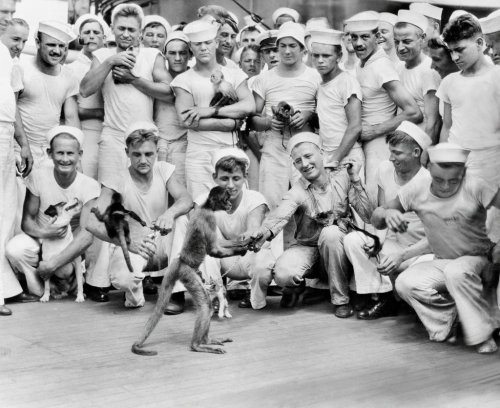

March 29, 1925: The crew of the U.S.S. Wyoming enjoyed several species of mascot to cheer them on their naval maneuvers: "a dog, a parrot, a monkey, a marmoset, a kitten and other strange beasts." Photo: The New York Times
The Stockholm, the famous boat to collide with the Italian liner...
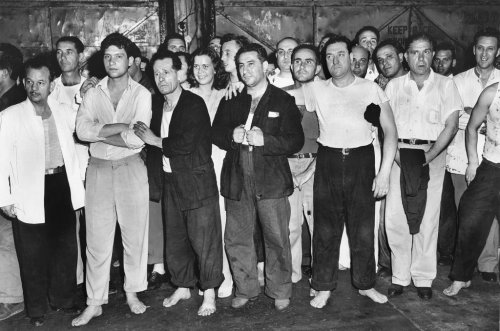
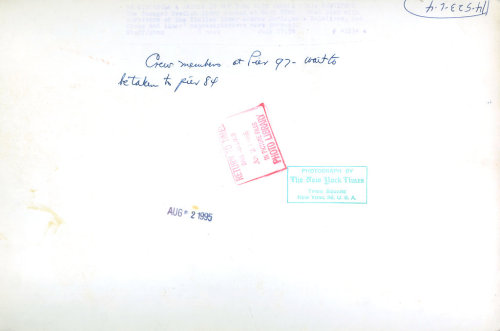
The Stockholm, the famous boat to collide with the Italian liner Andrea Doria in July 1956, arrived in New York to unload the crash's survivors and undergo repairs. Photo: The New York Times
July 30, 1956: After the Stockholm, a Swedish liner, collided...
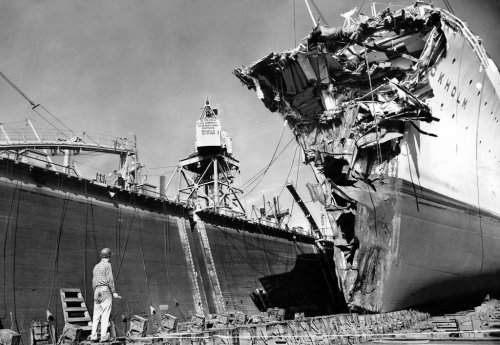
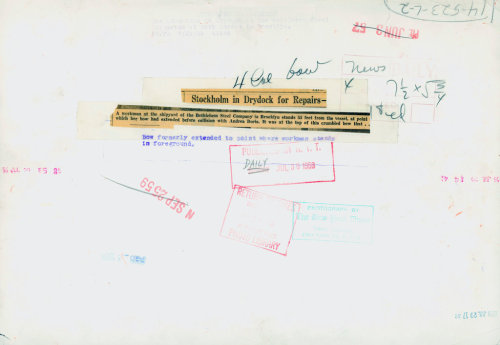
July 30, 1956: After the Stockholm, a Swedish liner, collided with the Andrea Dorea, an Italian cruise liner, killing 51, the damaged ship was dry-docked for repairs while its only Spanish seaman visited Linda Morgan, a 14-year-old American girl he rescued who spoke Spanish and was initially reported dead. In the crash, she had been "transferred from her berth on the Italian liner by the twisted steel of Stockholm." Photo: Carl Gossett/The New York Times
From the Mid-Week Pictorial, Sept. 30, 1933: a naval regatta...

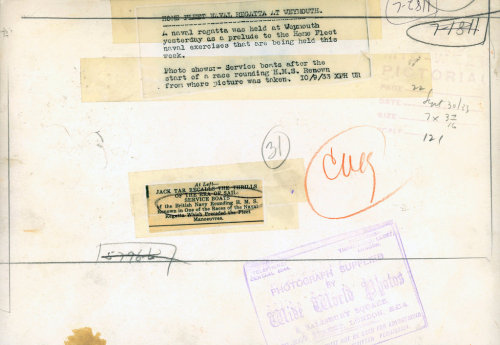
From the Mid-Week Pictorial, Sept. 30, 1933: a naval regatta performed exercises at Weymouth, England, in front of the H.M.S. Renown, which was built during World War I, reconstructed between world wars, and spent a lot of 1943 marshaling Winston Churchill to various conferences with Allied leaders. Despite the ship's proud service, she was sold for scrap in 1948. Photo: The New York Times
July 14, 1935: Connecting Manhattan, Queens and the Bronx, the...
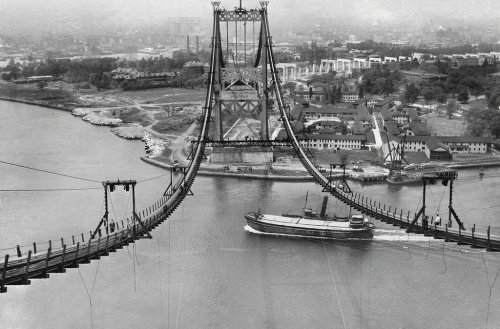

July 14, 1935: Connecting Manhattan, Queens and the Bronx, the Triborough Bridge — now officially the Robert F. Kennedy Bridge — was one of the larger public works of the Great Depression. Its construction was started on Black Friday in 1929, and it was opened by Robert Moses almost a year after this picture was taken. Photo: The New York Times
A maze of parkways near Queens Boulevard, presenting a "pattern...


A maze of parkways near Queens Boulevard, presenting a "pattern of progress." An Aug. 8, 1955, story, with another aerial photo, described the rapid development of Queens — "the spaces are fulling up," wrote Milton Bracker. "The imprint of the future is already visible on the still naked ground near by" what is now J.F.K. Airport, he added. "The imprint — as if the foot of an unseen cubistic monster had set itself down long enough to depress and darken the fill — is unmistakable from the crystal overlook of the airport control tower." Photo: Meyer Liebowitz/The New York Times
A March 13, 1960, article described the public's indictment of...
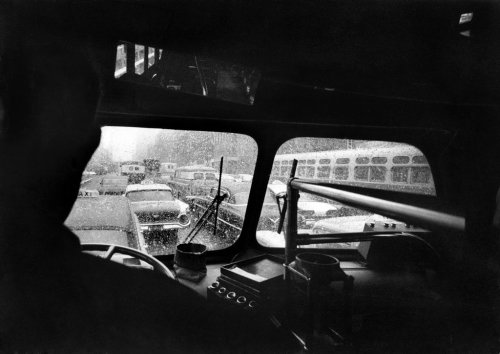
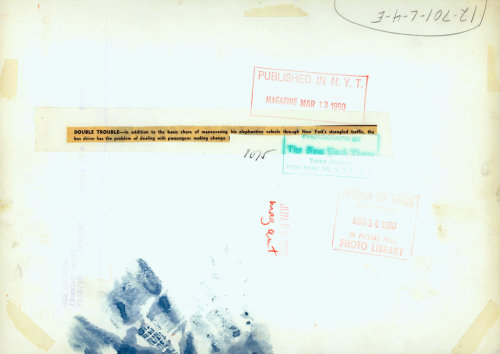
A March 13, 1960, article described the public's indictment of bus drivers, accusing them of "sometimes deliberately slamming on their brakes to shake up riders" or "refusing to pull up at the curb unless there is a puddle there." Reported by Gay Talese, who "avoids taking sides in the busman-passenger fracas by traveling to work on the subway," the piece endeavored to tell the story from the driver's point of view, a "story of how 10,000 drivers each day battle the world's worst traffic while being abused by old ladies, shortchanged by schoolboys, cut off by cabs and squeezed by trucks." Photo: Sam Falk/The New York Times
Dec. 9, 1957: Even in the 1950s, New York City public transit...
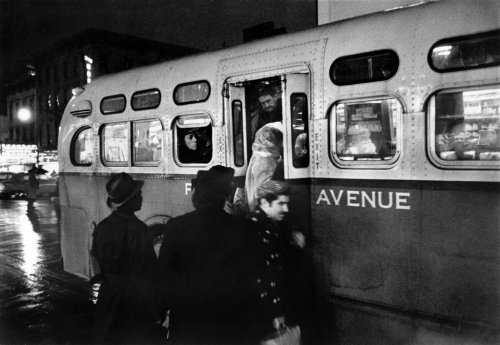
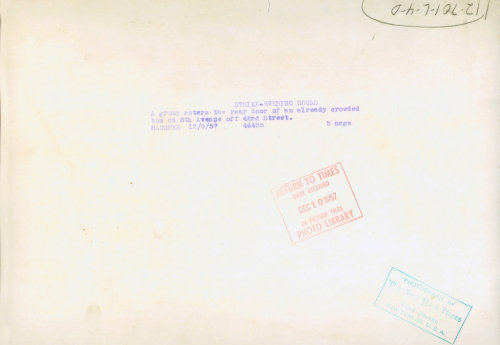
Dec. 9, 1957: Even in the 1950s, New York City public transit was a squeeze at Eighth Avenue and 42nd Street. Photo: Eddie Hausner/The New York Times
April 8, 1933: For those who have visited London and wondered...
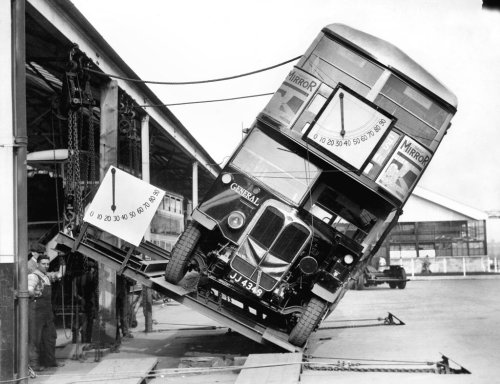
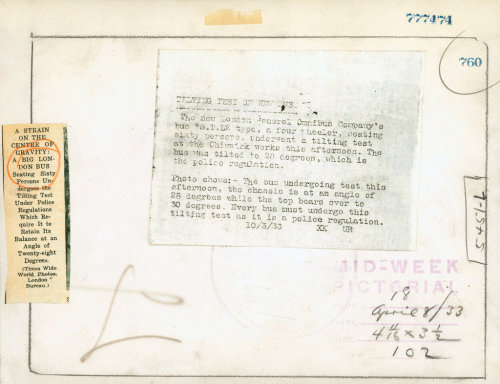
April 8, 1933: For those who have visited London and wondered how they know their double-decker buses won't fall over, this is apparently how they find out. Per police regulation, employees of the London General Omnibus Company put their 60-person bus to a "tilt test," putting it on a 28-degree angle. Photo: The New York Times
Sept. 30, 1928: At the Washington State Fair in Seattle, thrills...

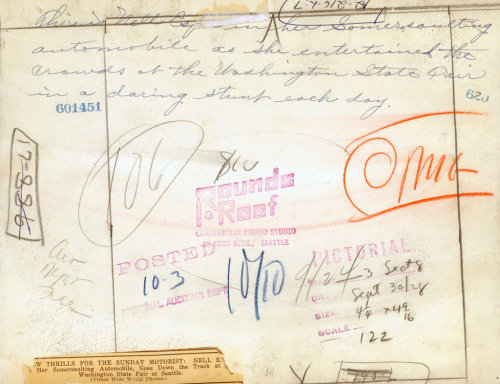
Sept. 30, 1928: At the Washington State Fair in Seattle, thrills for the Sunday drivers out there, though precisely what manner of thrills, we can only guess. Photo: The New York Times
Aug. 30, 1931: "A new turn in the history of diving" at a pool...
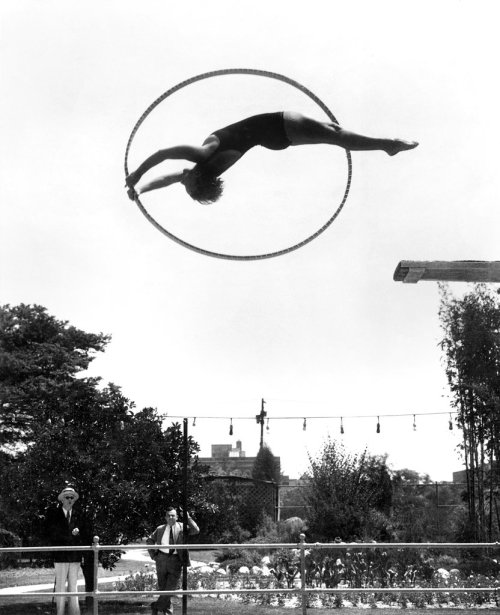
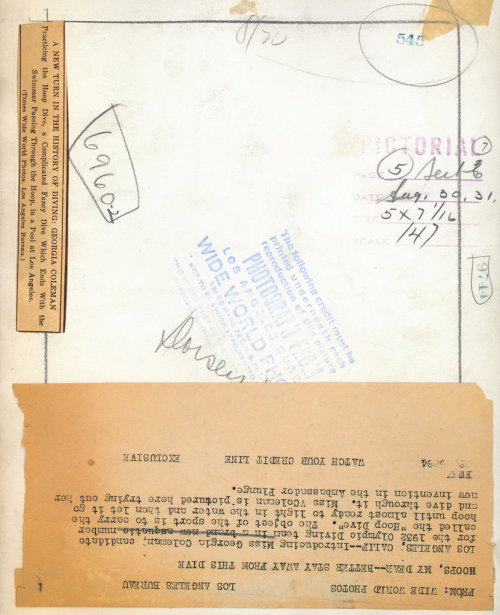
Aug. 30, 1931: "A new turn in the history of diving" at a pool in Los Angeles, where Georgia Coleman — in preparation for the 1932 Summer Olympics there, where she won two medals — practiced "a complicated fancy dive." Photo: The New York Times
April 27, 1984: The Lightning Loop at Great Adventure in Jackson...
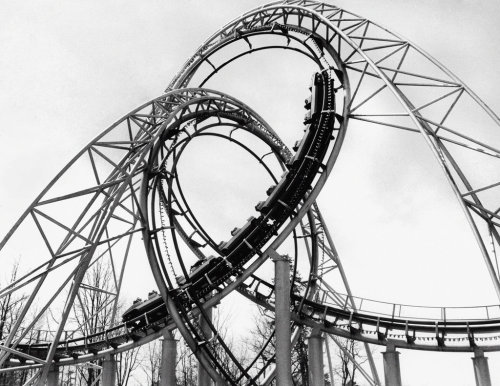
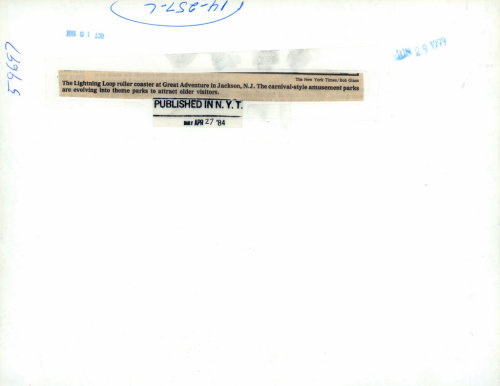
April 27, 1984: The Lightning Loop at Great Adventure in Jackson Township, N.J., appeared above an article about attracting older crowds to amusement parks. Marketers hoped that by making the new parks "discreetly educational," with better food or "designer merchandise," that they might appeal to "an older, calmer, more sophisticated generation." Food-wise, "the parks are experimenting with everything form pita bread sandwiches to lobster. … Older patrons, the rationale goes, are interested in a 'dining experience' rather than a quick snack." Photo: Bob Glass/The New York Times
Jan. 16, 1976: At the Alabama Space and Rocket Center in...
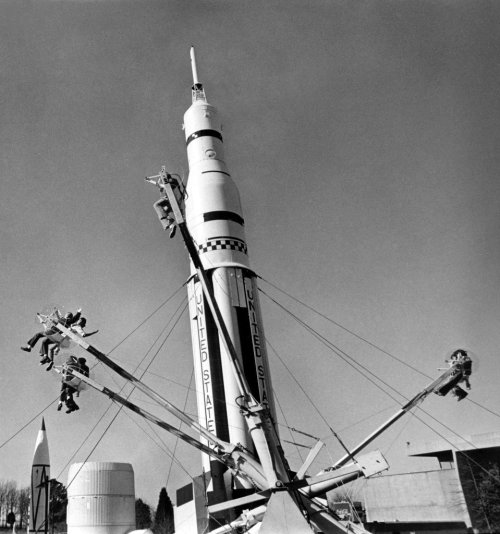
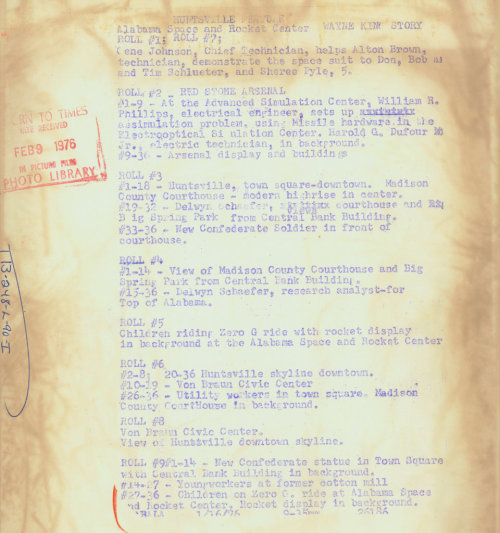
Jan. 16, 1976: At the Alabama Space and Rocket Center in Huntsville, children rode in zero-G, or something like it, with an American rocket on display behind them in this unpublished photo. Photo: Teresa Zabala/The New York Times
July 11, 1958: In a terrifying age of spectacular weaponry that...
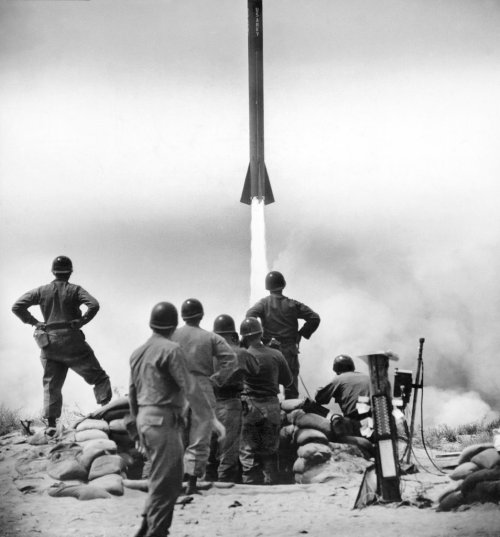
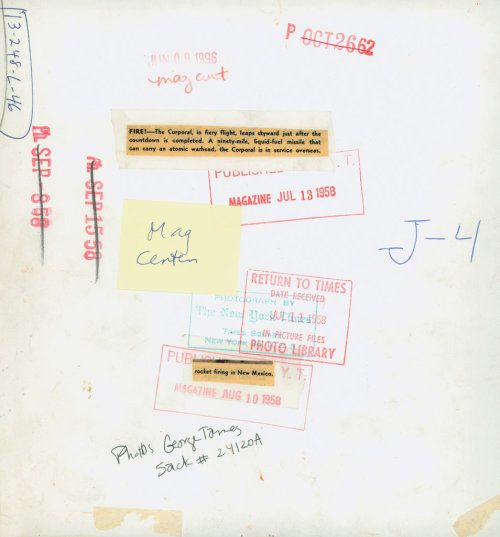
July 11, 1958: In a terrifying age of spectacular weaponry that presaged our current era of the drone, the United States Army put on a large demonstration of 14 different types of missiles before a large audience at Fort Bliss, Tex., and the nearby White Sands, N.M., missile range. Though most were still under development, the reporter warned of what the future held — of opening "a Pandora's box from which will leap missiles with ranges unlimited, speeds almost infinite, and actions almost human." This image reminded a letter writer of the famous picture of the flag raising at Iwo Jima. "They are so different, and yet so similar. Place them next to each other. Makes one think?" Photo: George Tames/The New York Times
May 25, 1955: For an "air defense command story" published that...
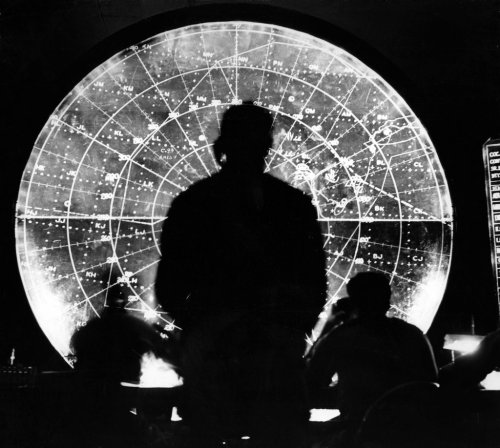
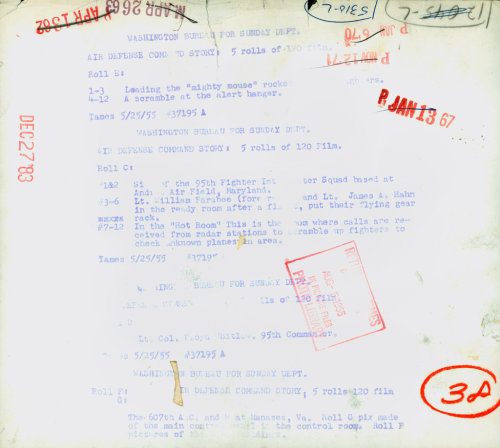
May 25, 1955: For an "air defense command story" published that summer, George Tames photographed various aspects of the operation at Andrews Air Field in Maryland and, 50 miles away, at the 647th Aircraft Control and Warning Squadron at Manassas, Va. Here, the warning squadron sights a "target" by radar, and its flight was recorded on a plexiglass plotting board. Photo: Geore Tames/The New York Times
Aug. 12, 1934: From the Mid-Week Pictorial, a squadron of...
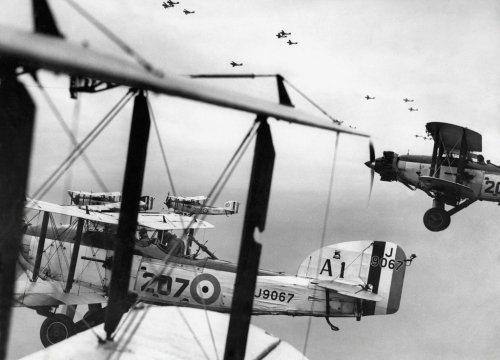
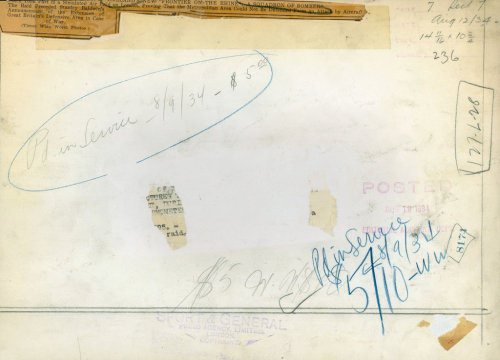
Aug. 12, 1934: From the Mid-Week Pictorial, a squadron of bombers took part in a simulated air raid on London, "proving that the metropolitan area could not be defended from an attack by aircraft." Photo: The New York Times
Feb. 14, 1940: Workers at La Guardia Airport fought the elements...
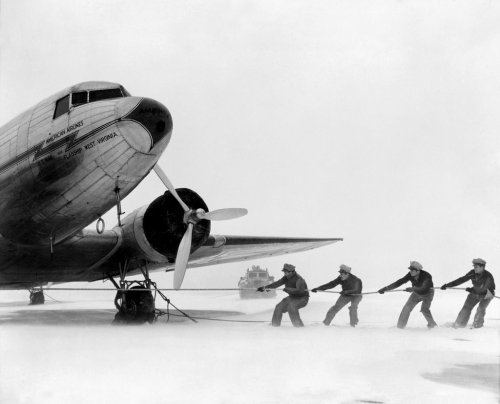

Feb. 14, 1940: Workers at La Guardia Airport fought the elements to hold down a plane as a large storm brought seven inches of snow and winds gusting at 60 miles per hour to New York, hammering the eastern part of the country. Bus services were suspended and a swath of the West Side Highway closed, but the city seemed to prevail in "what appeared to be a winning effort to keep essential services functioning." Photo: The New York Times
June 9, 1932: The Zeppelin railway coach, or "Lightning...
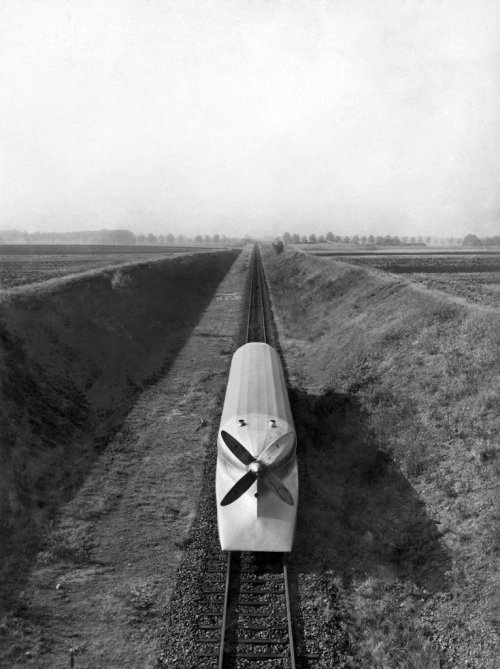
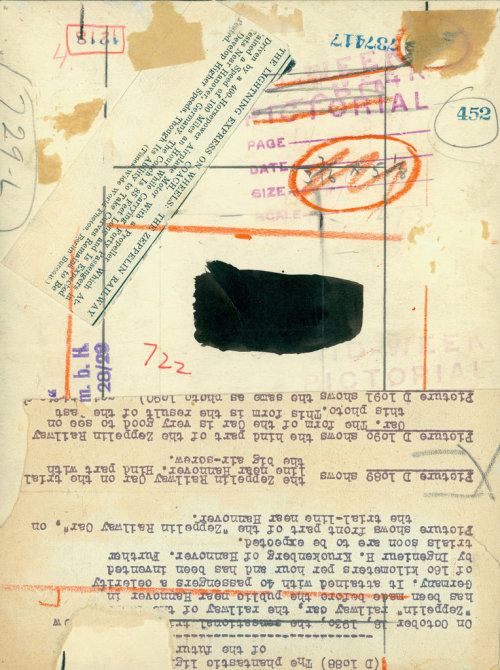
June 9, 1932: The Zeppelin railway coach, or "Lightning Express," could carry 40 passengers at 100 miles per hour in tests near Hanover, Germany. The caption notes, however, "its ability to take curves remains to be tested." Photo: The New York Times
Nov. 26, 1939: Oil transported by tank cars. Though oil had been...
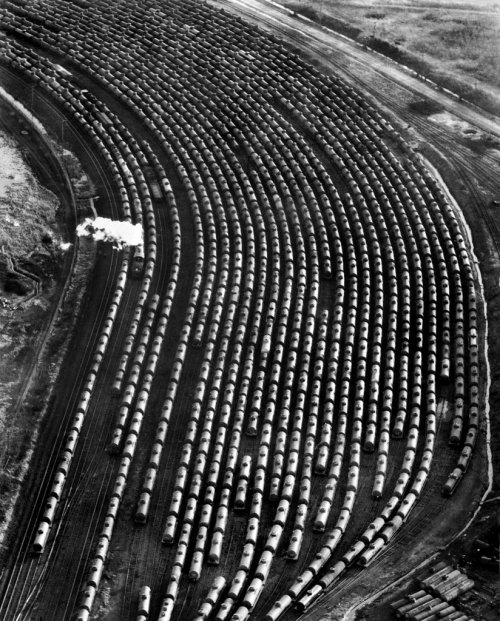
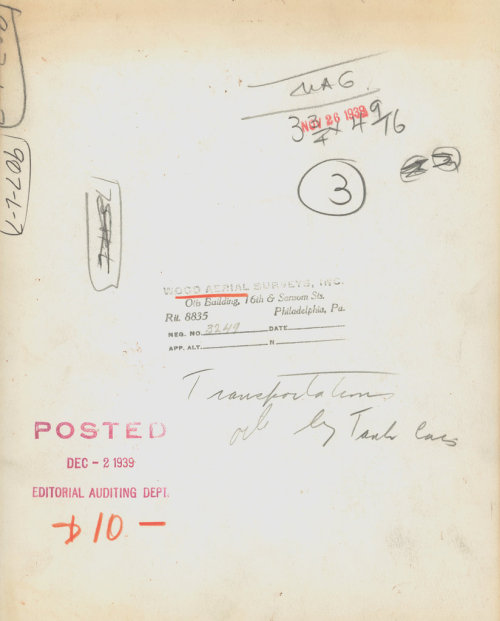
Nov. 26, 1939: Oil transported by tank cars. Though oil had been shipped in the United States since the 1860s, dozens of commodities made their way around using tank cars in the 1930s. During World War II, tank cars almost exclusively shipped oil as part of the war effort. Photo: Wood Aerial Surveys
Jan. 28, 1960: The National Defense Reserve Fleet, anchored in...
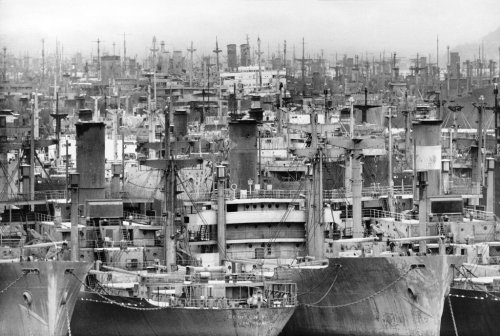
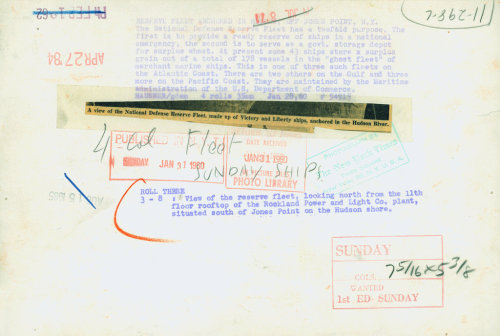
Jan. 28, 1960: The National Defense Reserve Fleet, anchored in the Hudson River at Tompkins Cove and remnants of the massive 5,000-ship fleet that moved troops and equipment during World War II. As reported in a Jan. 31 article, some awaited deployment in the next crisis, some awaited the wrecking crew, and some were used to store the nation's surplus of grain, saving the government more than $14 million from July 1953 to June 1959. Photo: Eddie Hausner/The New York Times














No comments:
Post a Comment